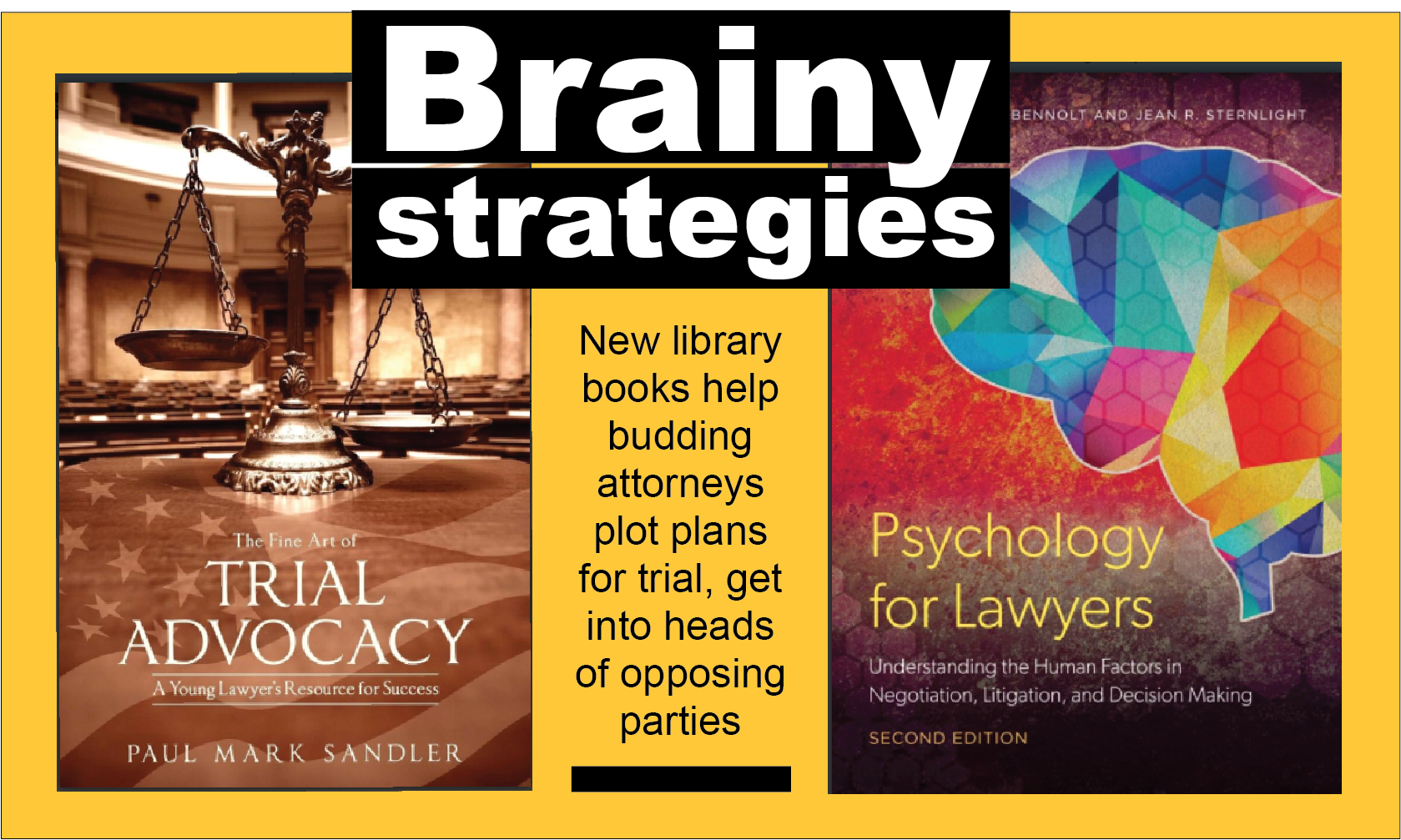We are highlighting two of the latest additions to the law library that both concern skills and strategies of legal advocacy. Both provide key information to budding attorneys that is not usually at the forefront of the law school curriculum.
The Fine Art of Trial Advocacy: A Young Lawyer’s Resource for Success, Paul Mark Sandler, 2021
This book helps make the arduous the lonely journey of developing the skills to make a persuasive argument in a courtroom more manageable, introducing key concepts with solid examples to help budding orators unleash their potential. Much of tapping into that future glory involves studying what has happened in the past. The Fine Art begins by introducing great advocates from the Classical era to the recent past, providing sketches of luminaries from Cicero to Clarence Darrow along with courtroom performances that helped make them legends. The book helps attorneys ensure that they are prepared for the courtroom experience and fully understand their duties, providing quizzes on realistic ethical problems as well as tips on cultivating professionalism that will help advance a career. The heart of the book, however, hearkens back to the great rhetoricians with which it opens, as it breaks down rhetorical mechanics that are useful for trial attorneys to answer, with concrete explanations and helpful examples of tasks such as creating emotional impact, and using tricks of language such as repetition and rhetorical tropes such as simile and metaphor to more effectively connect with listeners. It emphasizes clarity and helps ensure advocates use sound logic and avoid become ensnared in fallacies.
The book includes sound strategies for handling legal processes at each stage of a dispute, including the following:
- Discovery, and properly handling disclosures, interrogatories, and depositions.
· Voir dire, the initial communication with the jury.
· Opening statement, in which advocates must set the tone. Rhetorical tropes, delivery, and even facial expressions and gestures can have huge impact.
· Direct examination, in which the attorney introduces the witness, establishes credentials, elicits evidence, and peremptorily responds to the attacks to come in the opponent’s cross examination. The book emphasizes the form and content of the questions.
· Cross examination, in which advocates must selectively choose topics, arrange them strategically, control witnesses, and establish a style that undermines an opponent’s case while reinforcing their own.
· Closing arguments, which require strong appeals to logic and emotion.
The book emphasizes reviewing the work of others and one’s own past performances to learn from mistakes, growing into more powerful advocates. It provides strong examples of real world trial performances to set the stage. See also Modern Trial Advocacy, by Steven Lubet & J.C. Lore (2020) for a textbook approach to learn persuasion theory and the stages of building a case.
Psychology for Lawyers: Understanding the Human Factors in Negotiation, Litigation, and Decision Making (Jennifer K. Robbennolt & Jean R. Sternlight, 2021)
Law school courses typically don’t build a foundation of psychology that lawyers can use to be more effective negotiators, counselors, and writers, and just happier people overall. This textbook takes a multimedia approach to filling that void, pointing readers to videos that help drive home lessons on the human mind. It focuses on well-established empirical research that explores how ordinary people think, feel, and behave, concentrating on areas of research most useful for lawyers. It encourages lawyers to look inward as well as outward, recognizing how they can reduce faults that may hamper legal work such as biases. It begins with a crash course in psychology and develops into a clinic of lessons for trial practice. It begins with the basics of paying attention to the world around us and remembering what we have experienced or observed, and understanding that our memories can be and often are faulty. It tackles the subject of emotion before proceeding into various “judgment shortcuts,” or dangerous modes of thinking and behavior that could lead to faulty reasoning. It provides structure for decision making and persuasion, introducing specific decision-making tactics and influence tactics such as reciprocity and obedience to authority. A subsequent chapter introduces the concept of justice and subsequent chapters develop skills lawyers use to pursue that ideal, including interviewing people and counseling clients, as well as negotiating for solutions. Psychology can play a role in more mechanical functions such as discovery and due diligence as well. The book closes with advice on being successful and happy, including tips on time management, learning from mistakes, and improving wellbeing.




